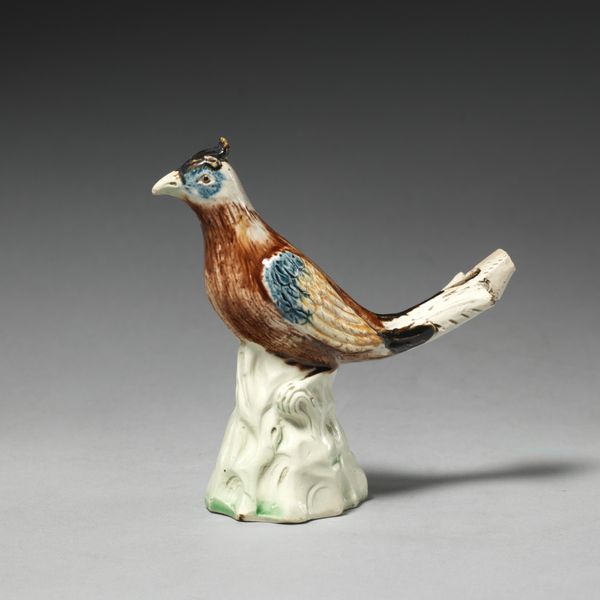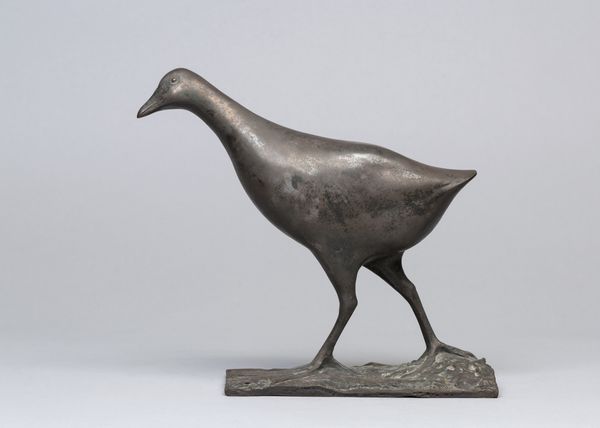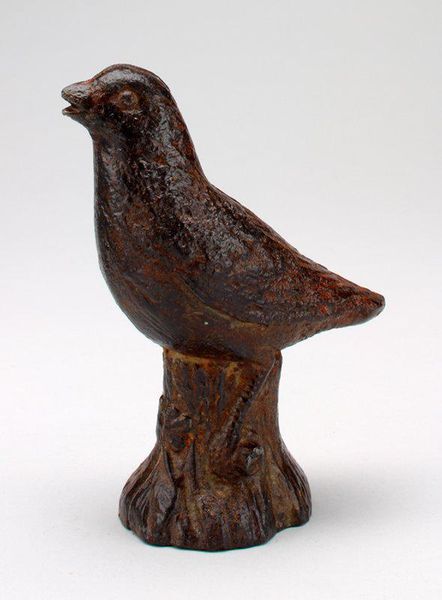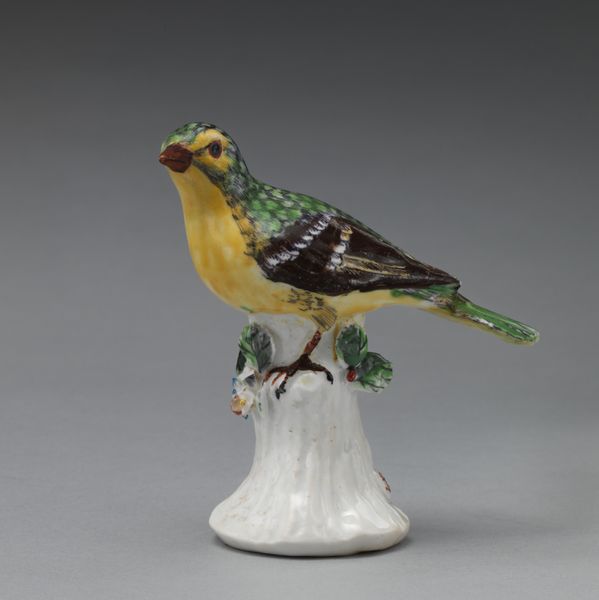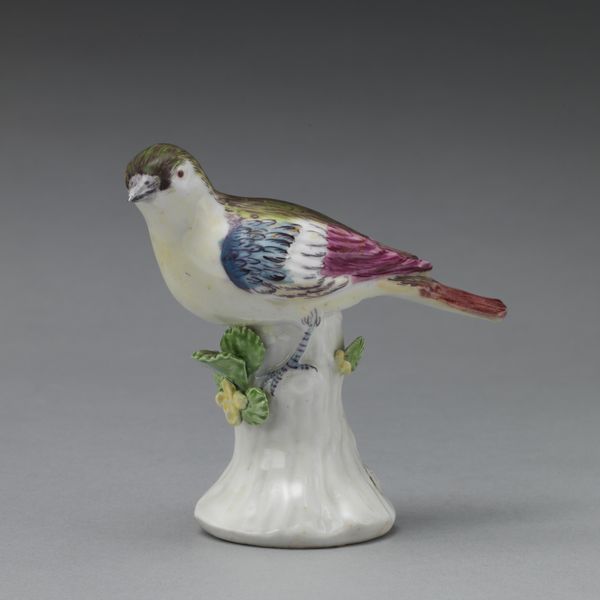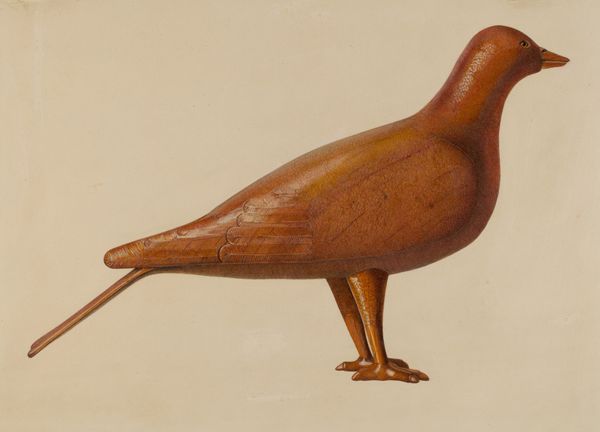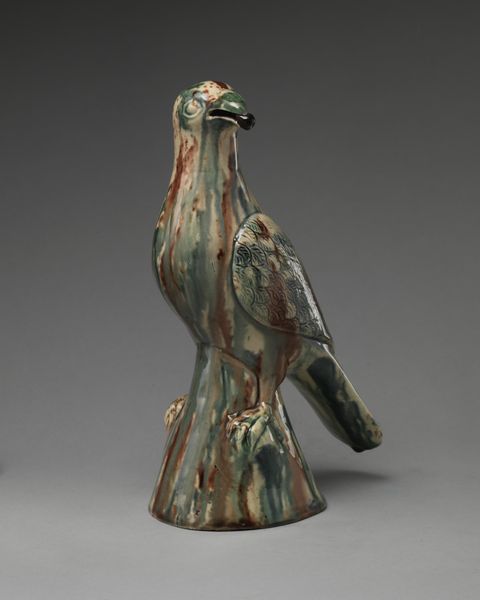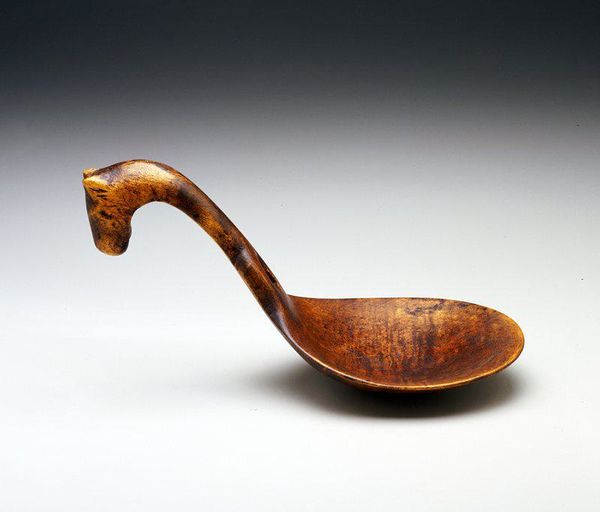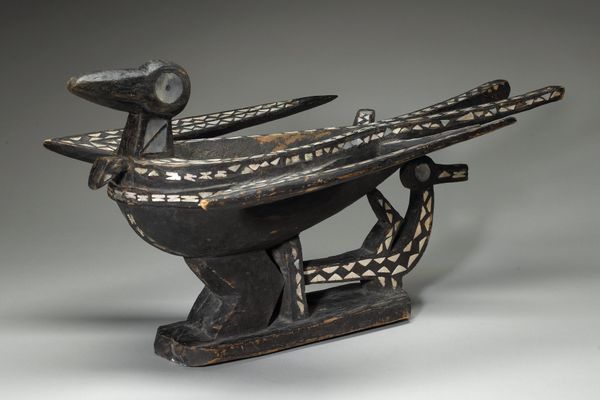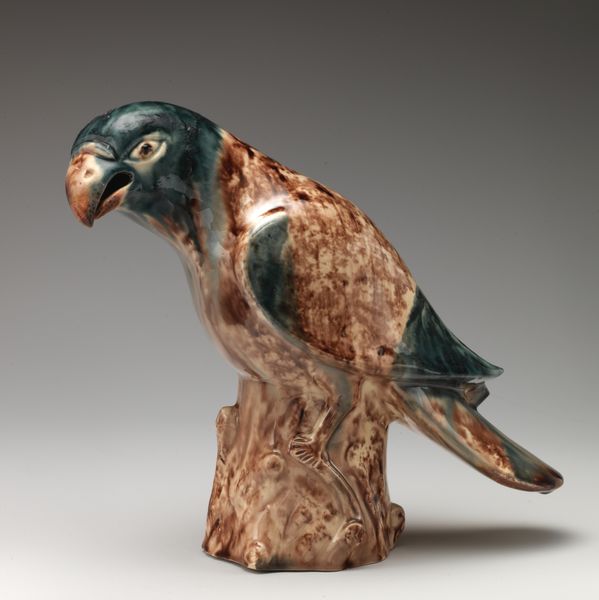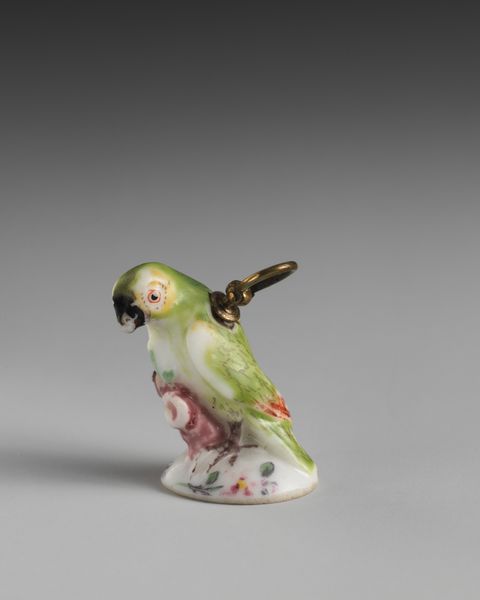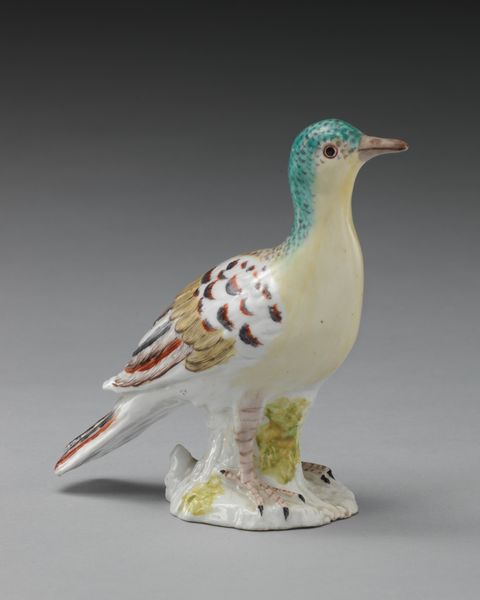
carving, sculpture, wood
#
carving
#
animal
#
figuration
#
folk-art
#
sculpture
#
wood
#
decorative-art
Dimensions: 16.5 ✕ 15.9 ✕ 5.1 cm (6 1/2 ✕ 6 1/4 ✕ 2 in.)
Copyright: Public Domain
Curator: Well, hello there! We’re here in front of this sweet carving. It’s titled "Robin", dating back to sometime between 1860 and 1900, and it resides here at the Art Institute of Chicago. It's wood, as you can see, seemingly stained and lacquered, then set upon a decorative base. Editor: It’s deceptively simple. It projects a charming, almost folksy tenderness. The upward tilt of its head conveys such a gentle curiosity, almost as if listening. I wonder what this artist was thinking as he selected each type of wood? What tools were employed to manipulate them into what we see here today? Curator: I’m intrigued by the lack of information about its maker, actually. Being that it falls into Decorative Art category suggests utility. But what utility could a carving of this nature hold, especially for a decorative art piece? In those decades, craft was evolving through major cultural shifts. Consider the Arts and Crafts movement emerging during this period—this piece would definitely stand outside. Editor: Precisely, though that distinction is really where its meaning can unfold! A common species made with care to this standard may provide comfort for the working-class individual, offering a simple moment of reprieve. The fact that it’s a robin adds another layer of symbolism, I believe. To see them as symbols of home or as divine messengers can act to humanize laborers through representation, allowing access to art beyond their own limitations. Curator: Agreed. Its relative size probably meant that production remained on a more human scale, maybe even individual work. Looking closely at the base too – someone definitely made a conscious effort. I bet examining that finish microscopically would offer so much more insight into this object’s origins. What it reveals about the economy, both artistically and economically would give the piece real dimension! Editor: I suppose what strikes me most, still, is that tension between something handmade yet somehow existing anonymously. It begs that deeper look beyond what’s superficially charming—questions who crafts meaning within these material constraints when artists do not, what roles can folk-art and decorative arts fill to transcend the art-historical canon by their existence. Curator: Definitely gives us something to think about when we consider the role of craftsmanship. It really illuminates its significance in the 19th century and raises a question for its place in history. Editor: Absolutely. A tangible story, rendered with striking eloquence that challenges, then transcends categories entirely.
Comments
No comments
Be the first to comment and join the conversation on the ultimate creative platform.
